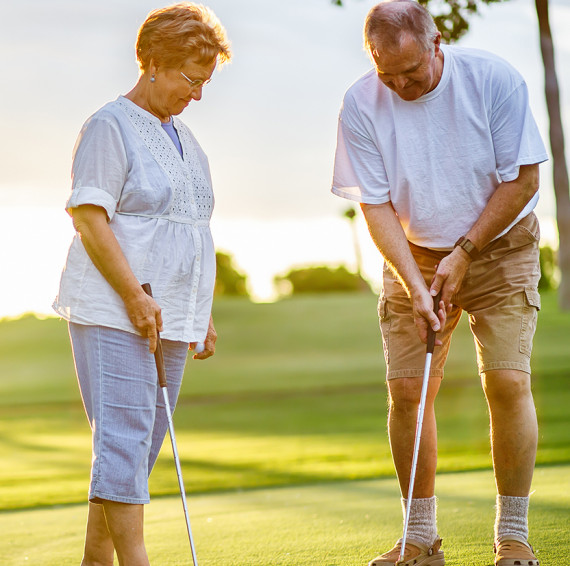OSTEOARTHRITIC CONDITIONS WE TREAT WITH PURE EXPANDED STEM CELL THERAPY
KNEES

Knees take a lot of load. Just by walking each knee has our full body weight 50% of the time, dispersed across just a few square centimetres of cartilage. Knees are also our most common injury to treat.
Knee cartilage cushions bone ends and if damaged the bone ends grind over each other, rough spots on the bone occur which further tear into the cartilage and create damage. Osteoarthritis of the knee can be a result of an injury such as a ligament tear, tendon damage or fracture. Because knees are weight-bearing, recovery time can be slow. Cartilage also has few blood vessels, so it is difficult for the body to repair its own knee joints.
Pure Expanded Stem Cell Therapy vs Knee Surgery
Unlike surgery, our Pure Expanded Stem Cell Therapy for knees is minimally invasive. It can decrease inflammation, slow damage due to osteoarthritis and repair damage that has already occurred. Our treatment has delayed or prevented knee surgery for many of our patients.
HIPS
Osteoarthritis is the most common cause of hip joint deterioration. This condition causes the damage and wear of the smooth cartilage that connects the thighbone to the inside of the hip socket. This results in rubbing of the bones within the hip joint together causing roughing and breaking of the bone. The result is a lot of pain and stiffness.
Pure Expanded Stem Cell Therapy vs Hip Surgery
An artificial joint is not identical to a natural hip as it lacks supporting anatomical structures that hold the femur firmly into the hip bones of the pelvic girdle.
Pure Expanded Stem Cell Therapy works to reduce inflammation and flood the area with Mesenchymal Stem Cells, which in time will stabilise joint pain. Patients walk out of the clinic after treatment and can engage in light exercise and rehab soon after. Many of our patients return to sports or simple day to day activities that were too painful to engage in prior to treatment.
Pure Expanded Stem Cell Therapy can slow the progression of osteoarthritis and delay the need for a hip replacement for many years. For those considering hip replacement surgery, Pure Expanded Stem Cell Therapy could be explored as a non-surgical treatment option. Best results are found when the osteoarthritis is at the 'moderate stage'. Not all patients will be suitable for this therapy.

SHOULDERS

There are two joints in the shoulder prone to osteoarthritis; the Glenohumeral joint and the Acromioclavicular Joint.
In the glenohumeral joint, the head of the humerus fits into the glenoid depression in the scapula. The glenoid depression is much shallower when compared to other joints which allow the shoulder a great range of motion but this requires more soft tissue (tendons, muscle, cartilage) to hold the humerus in place. Cartilage protects the joints by absorbing the pressure and shock created when you move and put stress on them. Osteoarthritis causes this cartilage coating at the head of the humerus and glenoid to deteriorate and allows bone-on-bone grinding which causes pain and stiffness.
The other joint in the shoulder that can experience osteoarthritis is the Acromioclavicular joint. This joint is where the clavicle (collar bone) meets the acromion (the highest part of the scapula). The Acromioclavicular joint is involved in raising the arm over the head or across the body. When osteoarthritis develops, the cartilage begins to thin and disappear causing pain and discomfort as the bones rub.
Pure Expanded Stem Cell Therapy vs Shoulder Surgery
When presenting with osteoarthritis of the shoulder, most patients are advised to go for the surgery. The side effects can include a long recovery time, blood vessel damage and pain.
Injections of Pure Expanded Stem Cells into the shoulder joint can reduce swelling, inflammation and pain whilst promoting rejuvenation of damaged cartilage. Pure Expanded Stem Cell Therapy is a non-invasive, non-surgical alternative in which the area of injury is flooded with cells, growth factors, and platelets. Recovery is shorter and with a specialised physiotherapy program, strength can be regained within 3-4 weeks.
ANKLES
Nearly 90% of people suffering ankle arthritis have either previous joint trauma or an underlying medical condition such as osteoarthritis. Osteoarthritis of the ankle is a degenerative joint disease which involves damaged cartilage in the joint or abnormal bony growth on the joint. As the cartilage deteriorates, the bones lose their protective coating and rub together causing pain, stiffness and inflammation.
The osteoarthritic process is gradual with many people initially dismissing symptoms, attributing them to the results of aging or an old injury "acting up." Left untreated, however, symptoms can gradually worsen and start to interfere with everyday activities.
Symptoms include pain and stiffness in the ankle joint, swelling in or near the ankle and difficulty walking or bending the ankle joint.
Current treatments include anti-inflammatory drugs, customised orthotic shoes and bracing to stop further deformity, physiotherapy to strengthen muscle and increase stability and in severe cases, surgery.
Pure Expanded Stem Cell Therapy vs Ankle Surgery
Surgical treatment options for foot and ankle arthritis include ankle arthroscopy to clean up damaged cartilage, the fusion of ankle bones where cartilage has been lost, and tendon grafts screwed in place to strengthen loose connections between bones.
These surgeries can involve a painful recovery and a lengthy rehabilitation process to restore strength and mobility. Biomechanics are permanently altered leaving some patients with knee, hip and back pain as a result of unattended strain. The body requires millimeter precision to maintain proper function and often surgeries are not able to restore alignment to such a precise level.
At ReGen Cellular we use your own high dose of Expanded Stem Cells, which are grown in our laboratory over several weeks and reinjected under guided ultrasound into the specific joint structure, and these cells then work in the site of your injury to grow into new, healthy tissue,
Depending on the severity of the condition, not every patient is suitable for this treatment.

ELBOWS

Tennis Elbow (lateral epicondylitis) is a term for severe elbow tendonitis.
Many patients with tennis elbow are builders, office workers, golfers and landscapers - not just tennis players!
It’s usually caused by a partial tear in the tendon fibers, which connect muscle to the bone. Symptoms include gradually worsening elbow pain which spreads to the forearm and to the back of the hand.
Pure Expanded Stem Cell Therapy vs Elbow Surgery
Conservative treatments are anti-inflammatory medications, physiotherapy, massage, cortisone injections and even acupuncture. After these measures, some patients have lingering pain and are faced with surgery which may mean a debridement or the removal of the tissue unable to be saved.
For those who do not want existing tissue removed, Pure Expanded Stem Cell Therapy may be a non-surgical option to heal, reduce pain and stabilise joint inflammation.